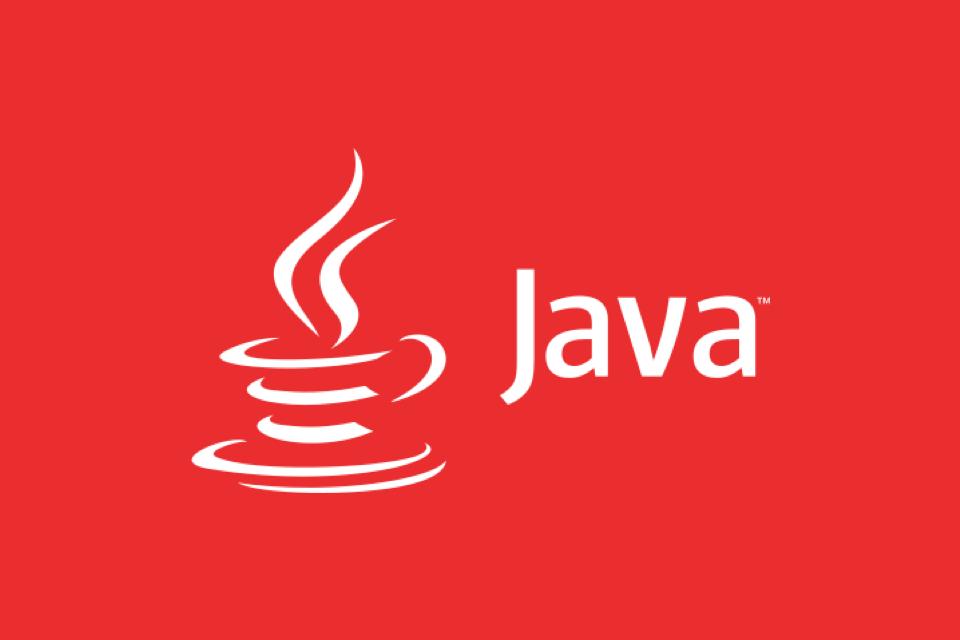In Java, the static keyword means a member belongs to the class itself, not to instances. Static variables are shared across all instances and accessed without object creation, useful for global tracking or constants. Static methods operate at the class level, cannot access non-static members, and are commonly used for utilities or factory methods. Static blocks initialize class-level data when the class loads. Multiple static blocks execute in order. Static nested classes and static imports exist but behave differently. Overuse of static can lead to memory issues, so it should be applied carefully for optimal code organization and resource management.

When you see the static keyword in Java, it usually means something belongs to the class itself, not to any specific object created from that class. So if a variable or method is declared as static, you can use it without creating an instance of the class.

Static Variables (Class Variables)
A static variable is shared across all instances of a class. That means no matter how many objects you create, there's only one copy of that variable.
For example:

public class Counter {
public static int count = 0;
public Counter() {
count ;
}
}If you create three instances of Counter, count will be 3. It doesn't belong to any single instance — it belongs to the class.
This is useful when you want to track something globally, like a counter, configuration settings, or constants.

Some common uses:
- Storing application-wide constants (
public static final String APP_NAME = "MyApp";) - Keeping shared resources like connection pools or caches
Just be careful not to overuse them. Since they live for the entire runtime of your app, they can lead to memory issues if not managed properly.
Static Methods
Static methods are similar to static variables — they belong to the class, not to an instance. You call them using the class name, like ClassName.methodName().
One big rule: a static method can't access non-static members directly. Because those belong to an object, and there might not even be an object when the method is called.
Common examples:
- Utility methods like
Math.sqrt() - Factory methods that return instances of the class
- Helper functions inside a class that don’t rely on instance data
Here’s a simple example:
public class StringUtils {
public static boolean isEmpty(String str) {
return str == null || str.length() == 0;
}
}You can call StringUtils.isEmpty(myString) without ever creating a StringUtils object.
Static Blocks and Initialization
Sometimes you need to run some code when the class is first loaded into memory. That's where static blocks come in.
They look like this:
public class Database {
static {
// Load driver or connect to database
}
}This block runs once when the class is used for the first time. It's often used to initialize complex static variables or set up external connections.
You can have multiple static blocks — they'll execute in the order they appear in the code.
Also worth noting:
- Static nested classes exist but behave differently from regular inner classes
- Static imports let you import static members directly (like
import static java.util.Arrays.asList;)
So yes, static helps you work at the class level rather than the object level. It has its place, especially for utilities, constants, and shared resources. But because it sticks around and isn't tied to an object lifecycle, it's easy to misuse. Used wisely, though, it simplifies code and improves organization.
That's the core of what static does in Java. Not too complicated once you get the hang of it, but definitely something to understand clearly.
The above is the detailed content of What is the 'static' keyword in Java?. For more information, please follow other related articles on the PHP Chinese website!

Hot AI Tools

Undress AI Tool
Undress images for free

Undresser.AI Undress
AI-powered app for creating realistic nude photos

AI Clothes Remover
Online AI tool for removing clothes from photos.

Clothoff.io
AI clothes remover

Video Face Swap
Swap faces in any video effortlessly with our completely free AI face swap tool!

Hot Article

Hot Tools

Notepad++7.3.1
Easy-to-use and free code editor

SublimeText3 Chinese version
Chinese version, very easy to use

Zend Studio 13.0.1
Powerful PHP integrated development environment

Dreamweaver CS6
Visual web development tools

SublimeText3 Mac version
God-level code editing software (SublimeText3)
 How to handle transactions in Java with JDBC?
Aug 02, 2025 pm 12:29 PM
How to handle transactions in Java with JDBC?
Aug 02, 2025 pm 12:29 PM
To correctly handle JDBC transactions, you must first turn off the automatic commit mode, then perform multiple operations, and finally commit or rollback according to the results; 1. Call conn.setAutoCommit(false) to start the transaction; 2. Execute multiple SQL operations, such as INSERT and UPDATE; 3. Call conn.commit() if all operations are successful, and call conn.rollback() if an exception occurs to ensure data consistency; at the same time, try-with-resources should be used to manage resources, properly handle exceptions and close connections to avoid connection leakage; in addition, it is recommended to use connection pools and set save points to achieve partial rollback, and keep transactions as short as possible to improve performance.
 How to work with Calendar in Java?
Aug 02, 2025 am 02:38 AM
How to work with Calendar in Java?
Aug 02, 2025 am 02:38 AM
Use classes in the java.time package to replace the old Date and Calendar classes; 2. Get the current date and time through LocalDate, LocalDateTime and LocalTime; 3. Create a specific date and time using the of() method; 4. Use the plus/minus method to immutably increase and decrease the time; 5. Use ZonedDateTime and ZoneId to process the time zone; 6. Format and parse date strings through DateTimeFormatter; 7. Use Instant to be compatible with the old date types when necessary; date processing in modern Java should give priority to using java.timeAPI, which provides clear, immutable and linear
 Comparing Java Frameworks: Spring Boot vs Quarkus vs Micronaut
Aug 04, 2025 pm 12:48 PM
Comparing Java Frameworks: Spring Boot vs Quarkus vs Micronaut
Aug 04, 2025 pm 12:48 PM
Pre-formanceTartuptimeMoryusage, Quarkusandmicronautleadduetocompile-Timeprocessingandgraalvsupport, Withquarkusoftenperforminglightbetterine ServerLess scenarios.2.Thyvelopecosyste,
 Understanding Network Ports and Firewalls
Aug 01, 2025 am 06:40 AM
Understanding Network Ports and Firewalls
Aug 01, 2025 am 06:40 AM
Networkportsandfirewallsworktogethertoenablecommunicationwhileensuringsecurity.1.Networkportsarevirtualendpointsnumbered0–65535,withwell-knownportslike80(HTTP),443(HTTPS),22(SSH),and25(SMTP)identifyingspecificservices.2.PortsoperateoverTCP(reliable,c
 How does garbage collection work in Java?
Aug 02, 2025 pm 01:55 PM
How does garbage collection work in Java?
Aug 02, 2025 pm 01:55 PM
Java's garbage collection (GC) is a mechanism that automatically manages memory, which reduces the risk of memory leakage by reclaiming unreachable objects. 1.GC judges the accessibility of the object from the root object (such as stack variables, active threads, static fields, etc.), and unreachable objects are marked as garbage. 2. Based on the mark-clearing algorithm, mark all reachable objects and clear unmarked objects. 3. Adopt a generational collection strategy: the new generation (Eden, S0, S1) frequently executes MinorGC; the elderly performs less but takes longer to perform MajorGC; Metaspace stores class metadata. 4. JVM provides a variety of GC devices: SerialGC is suitable for small applications; ParallelGC improves throughput; CMS reduces
 Using HTML `input` Types for User Data
Aug 03, 2025 am 11:07 AM
Using HTML `input` Types for User Data
Aug 03, 2025 am 11:07 AM
Choosing the right HTMLinput type can improve data accuracy, enhance user experience, and improve usability. 1. Select the corresponding input types according to the data type, such as text, email, tel, number and date, which can automatically checksum and adapt to the keyboard; 2. Use HTML5 to add new types such as url, color, range and search, which can provide a more intuitive interaction method; 3. Use placeholder and required attributes to improve the efficiency and accuracy of form filling, but it should be noted that placeholder cannot replace label.
 go by example http middleware logging example
Aug 03, 2025 am 11:35 AM
go by example http middleware logging example
Aug 03, 2025 am 11:35 AM
HTTP log middleware in Go can record request methods, paths, client IP and time-consuming. 1. Use http.HandlerFunc to wrap the processor, 2. Record the start time and end time before and after calling next.ServeHTTP, 3. Get the real client IP through r.RemoteAddr and X-Forwarded-For headers, 4. Use log.Printf to output request logs, 5. Apply the middleware to ServeMux to implement global logging. The complete sample code has been verified to run and is suitable for starting a small and medium-sized project. The extension suggestions include capturing status codes, supporting JSON logs and request ID tracking.
 Comparing Java Build Tools: Maven vs. Gradle
Aug 03, 2025 pm 01:36 PM
Comparing Java Build Tools: Maven vs. Gradle
Aug 03, 2025 pm 01:36 PM
Gradleisthebetterchoiceformostnewprojectsduetoitssuperiorflexibility,performance,andmoderntoolingsupport.1.Gradle’sGroovy/KotlinDSLismoreconciseandexpressivethanMaven’sverboseXML.2.GradleoutperformsMaveninbuildspeedwithincrementalcompilation,buildcac






